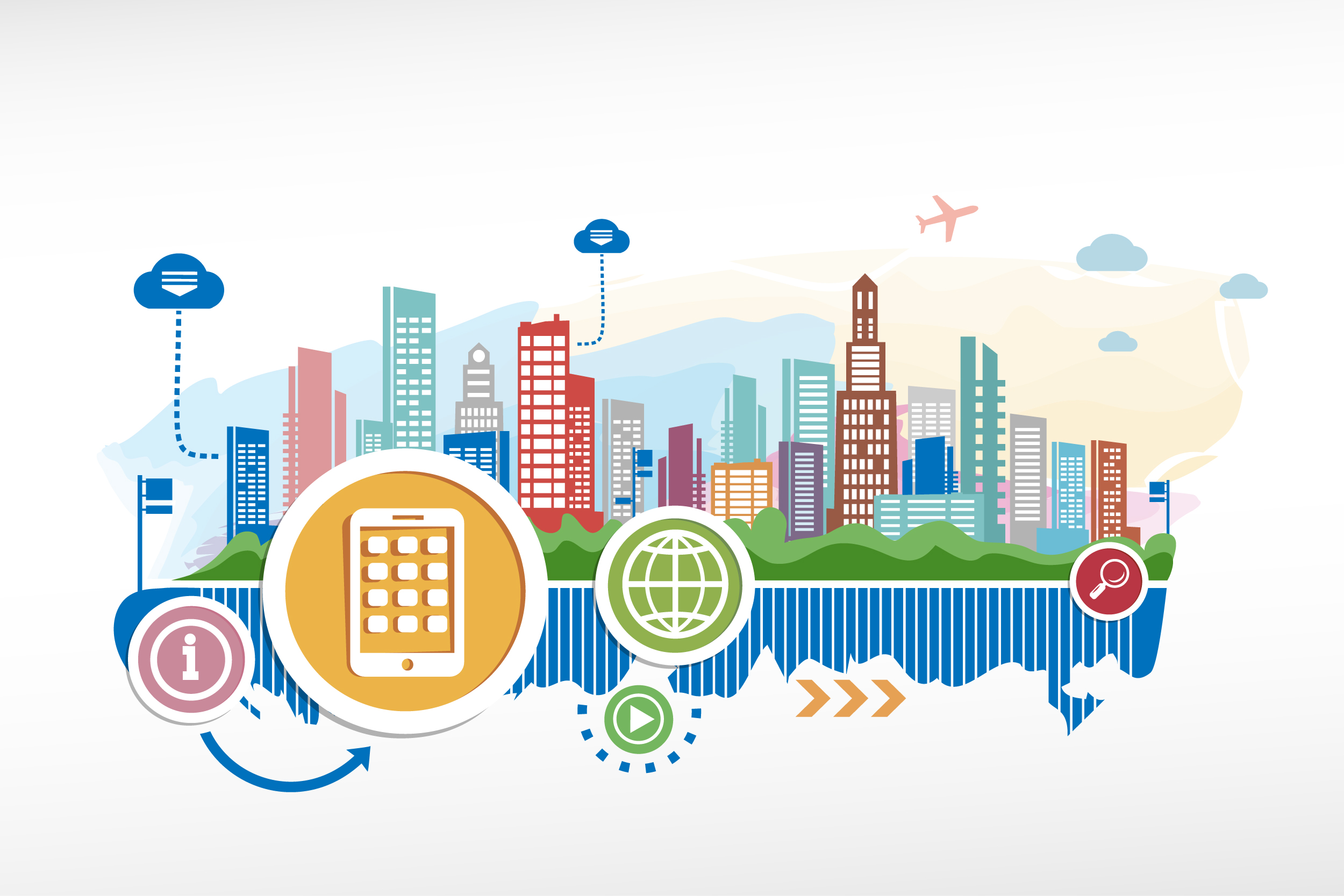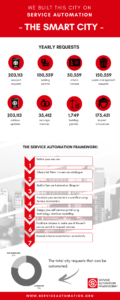Building a Smart City on Service Automation
Many of the larger cities around the world have the ambition to become a ‘smart city.’ But what does that mean exactly? What is it that makes a city smart? According to Wikipedia, the official definition would be:

Building a Smart City on Service Automation
“A smart city is an urban development vision to integrate information and communication technology (ICT) and Internet of things (IoT) technology in a secure fashion to manage a city’s assets.”
Very clearly, a smart city needs to coordinate and integrate data streams in order to make the lives of citizens better. That all sounds very wonderful, but how exactly can you set the first step to do this?
A smart city is a data-driven city
In order to realise the vision of a smart city, the first necessary step is to start collecting data. Data about citizens, data about city expenditures, data about city processes, etc. Only if there is data available, it is possible to start improvement project that actually make a difference. Why? Because these decisions are based on facts and not city politics.
Let’s take a very simple example and ask a very simple question: what day of the week does the city receive most requests for new passports? The answer is obviously Monday, because most passports are lost during the weekend. Most city offices are closed during the weekend and people queue up on Monday to requests a new passport. But what what is the second busiest time of the week? And what is the seasonal pattern over the different months of the year? Most cities don’t know, because they don’t collect the data in a structured manner.
A smart city is built on Service Automation
As a next step, envision what a passport application process would look like in a smart city. In a smart city, there would be centralised self service portal where citizens can arrange all their city services: request passport, marriage license, parking permits, etc.
Every citizen would be able to request these services, and the ‘smart’ city would be able to process most of the workload automatically. No more standing in line on Monday morning, but already being able to request the new document online. You would already be able to upload your photo, insert your key contact information and execute the payment. Additional features, such as uploading a police report, could be added very easily.
In a smart city, the passport application process would look like the figure below:

The benefits of delivering automated services to citizens are easily identified:
- The self service portal is highly scalable. With a single portal, all citizens of a big city can be serviced. Additionally, automated services can be requested after office hours and during the weekends.
- The self service interface assists smart cities in making data-driven decisions based on on the interactions of its citizens. Smart cities ‘know’ what kind of services citizens are looking for and when they would like to receive theses services. As a result, cities can plan their resources more effectively.
- A smart city focuses on it citizens, making it a user-centric approach. City services are provided based on the wishes and preferences of of their citizens.
- By automating frequently occurring tasks (passport requests, parking permits, etc) unnecessary manual labor is eliminated, freeing up community budgets for different purposes.
- Automated services help a city prepare for the future and to become a smart city…
In order to become a smart city, service automation provides a first step to become the data-driven city of the future. If you want to learn more about how you can start automating services, we recommend reading the service automation blueprinting article, which outlines how the blueprint for passport requests was composed.

Created by The Service Automation Framework Alliance.
